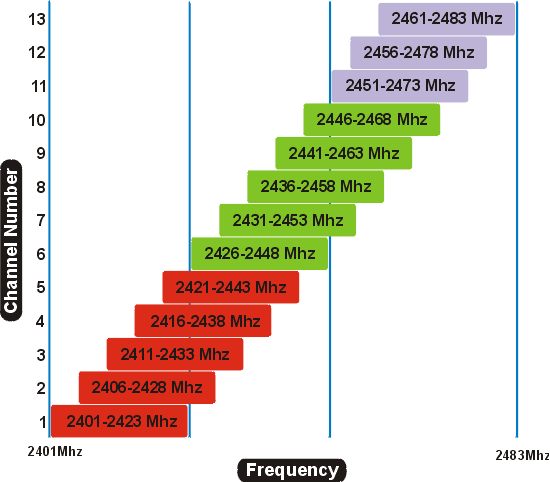
General Router FAQ
Wireless LAN Channels

|
General Router FAQWireless LAN Channels |

|
For 802.11b and 802.11g, there are 13 channels (frequencies) allocated in the 2.4Ghz band. Each channel uses 30Mhz of bandwidth so if you select (for example) Channel 1, it takes up bandwidth from 2412Mhz to 2435Mhz but channels 2-5 overlap with that (see diagram below). With an overlap, the bandwidth has to be shared with any other access points operating in those overlapping channels.
If you are installing several access points, or adjacent homes/offices are using Wireless LAN, you want to have non-overlapping channels in order to maximise speed (by minimising congestion). Therefore, if you select Channel 1 for one access point, you want to select channel 6 (2447-2460Mhz) for the next one and then Channel 11 for the next access point. This gives you three non-overlapping ranges. You can use any channel, for example channel 2, but then you overlap onto channel 6 so the next clear one is channel 7 which doesn't leave enough bandwidth for a third non overlapping channel.
If you have a neighbour with a Wireless LAN device, try to agree between you to use non-overlapping channels.. This is not always possible in high-density WLAN areas, where there are many users in an area each with their own access point. Accesspoints can co-exist on the same frequency but performance can be affected. The table below shows which channels overlap each other.
